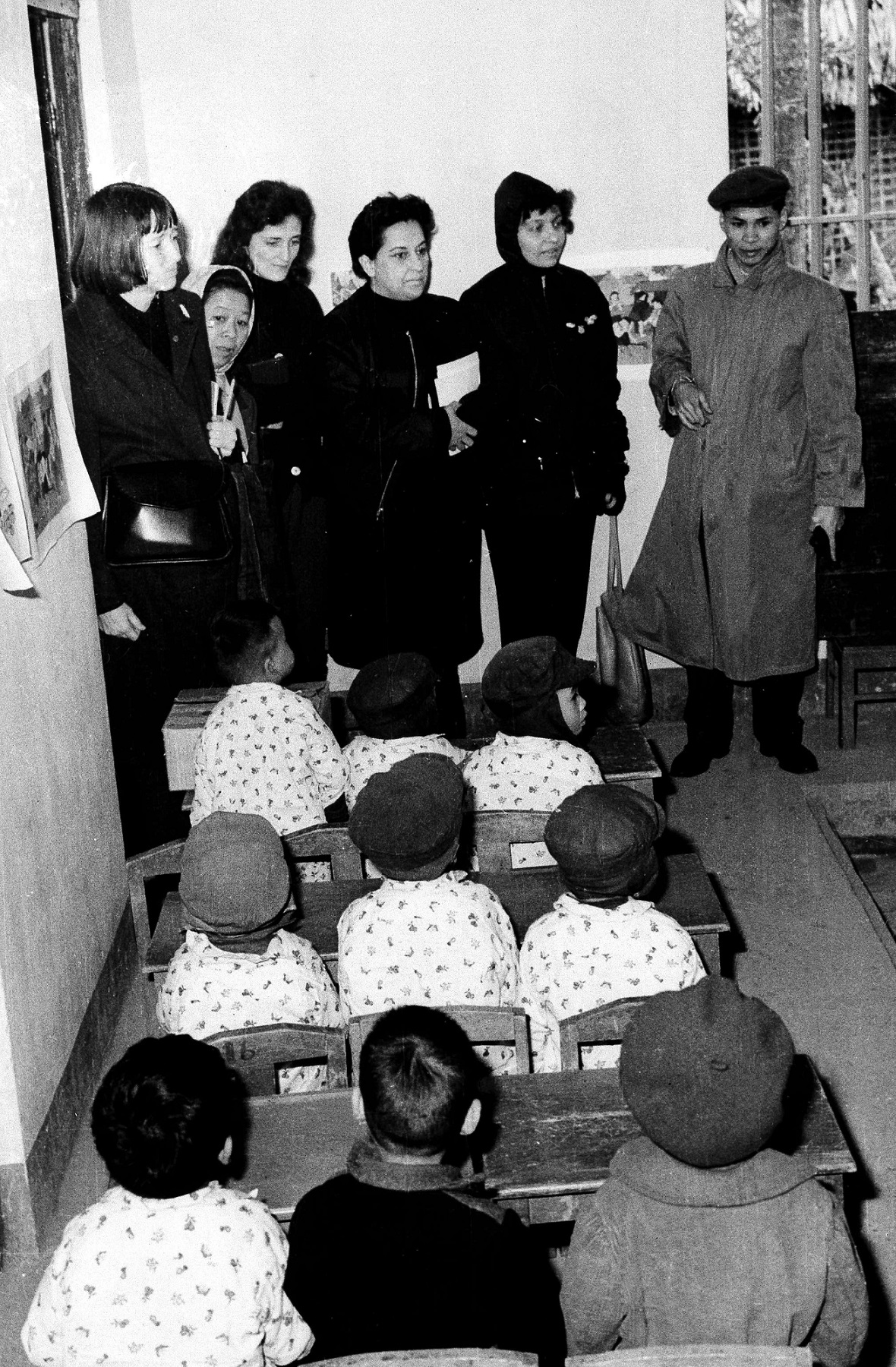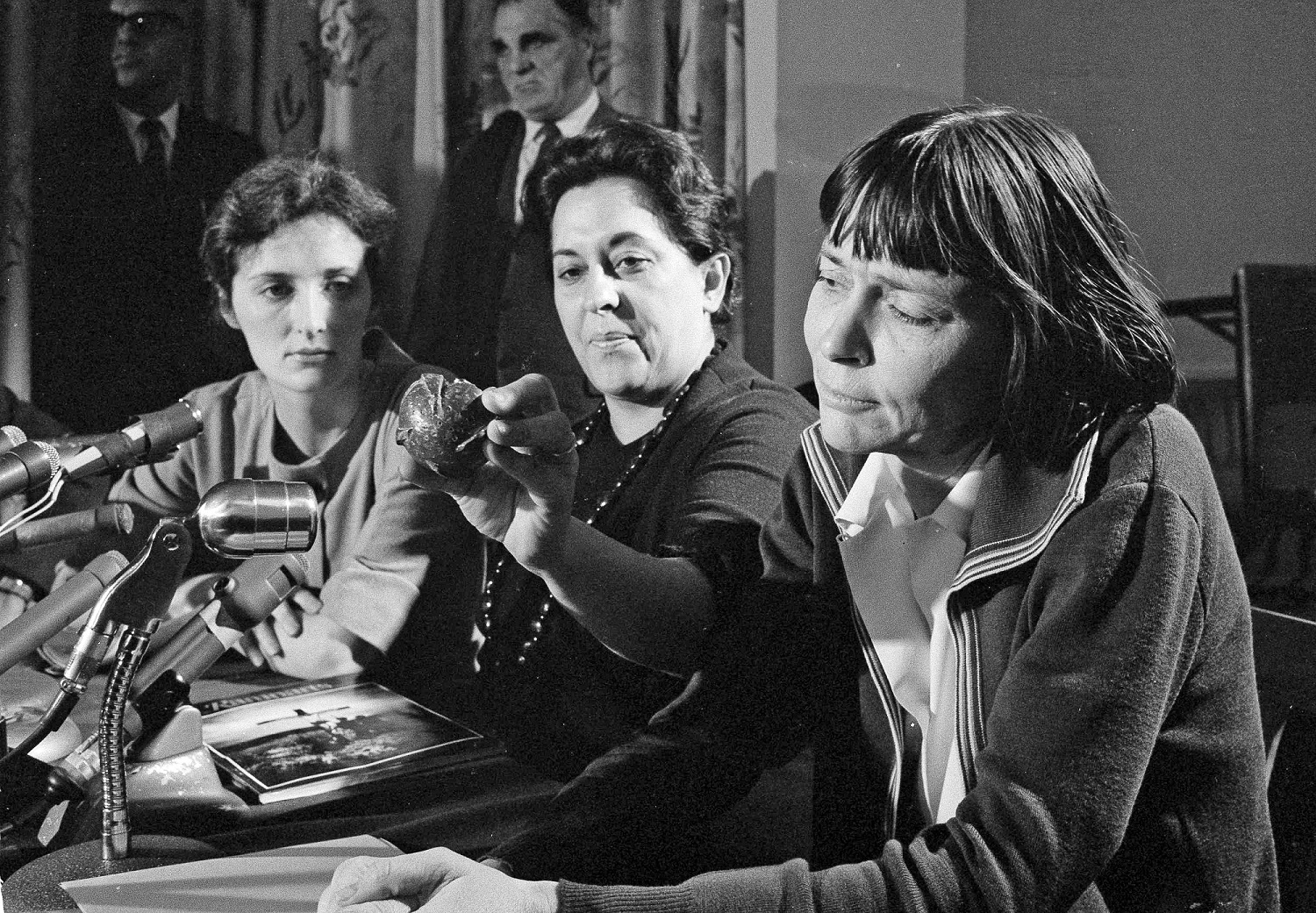Background
In mid-December 1966, the Women’s Union of North Vietnam welcomed four American women antiwar activists to Hanoi, the country’s capital city. The women were Patricia J. Griffith of Ithaca, New York; Grace M. Newman of New York City; Barbara Deming of Wellfleet, Massachusetts; and Diane Bevel of Chicago. Dave Dellinger, a prominent antiwar activist, arranged the trip after he participated in a similar visit.
All four women were involved in the antiwar movement at home. Grace’s brother, Dennis, was a member of the Fort Hood Three, the first American soldiers to publicly declare they would not serve in Vietnam. Grace spoke out in defense of his actions during a highly publicized trial. By the time Grace toured North Vietnam, her brother was serving a three-year prison sentence for his actions.
The U.S. State Department prohibited travel to North Vietnam. So the American women went to Paris, then to Moscow and China, and finally to North Vietnam. They traveled in a camouflaged jeep at night and without lights to avoid American bombs. They met with North Vietnamese leader Ho Chi Minh for over an hour. They also visited schools, hospitals, and factories, and spoke with two American prisoners of war.
On the way back to the United States, the women traveled separately. Patricia was stopped at the American border for questions. Officials confiscated several rolls of film and other materials. However, she successfully smuggled letters from the prisoners of war by hiding them in her purse, which was not examined.
After their return, Patricia, Grace, and Barbara held a press conference to describe the death and destruction they witnessed. They said they believed that North Vietnam would “fight against foreign domination even if they were bombed back into the Stone Age.” Grace displayed part of a small American device called a “lazy dog.” She brought it back as an example of the weapons Americans used to kill Vietnamese people. She said countless numbers of these bombs could be found all over North Vietnam.
About the Image
The first photograph shows the American women visiting a school in North Vietnam.
The second photograph shows the post-trip press conference in New York City. Grace Newman is in the center holding a “lazy dog” bomb.
Vocabulary
- Ho Chi Minh: Political leader of North Vietnam.
- “lazy dog” bomb: A small projectile bomb designed to be dropped from airplane during a raid.
- North Vietnam: The name given to the northern part of Vietnam, which sought to protect communist rule during the Vietnam War. The formal name was the Democratic Republic of Vietnam.
- Stone Age: A prehistoric period where tools were made of stone. Sometimes used to describe a state of primitive existence.
Discussion Questions
- What is happening in each image?
- Why do you think North Vietnam wanted American women to visit and tour the country? Why do you think Ho Chi Minh agreed to meet with them?
- Why do you think antiwar activists wanted to visit North Vietnam during the War?
- Why do you think the North Vietnamese wanted to show the women a school?
- Why do you think the American women held a press conference upon their return?
- What points did Grace Newman hope to make by displaying the “lazy dog” bomb at a press conference?
Suggested Activities
- APUSH Connection: 8.8: The Vietnam War
- Invite students to compare these photographs with the life story of Nancy Sanchez, who was also in Vietnam, as a member of the Army. How did these various women feel about the war? How did experiencing the war first hand influence them?
- Explore the history of America’s role in the Vietnam War through the experiences of women by connecting this resource to the Pendergrass letters, the life story of Nancy Sanchez, and the life story of Bella Abzug.
- Learn more about Grace’s brother and the Fort Hood Three through their profile in the curriculum guide The Vietnam War: 1945-1975.
Themes
AMERICA IN THE WORLD; ACTIVISM AND SOCIAL CHANGE
New-York Historical Society Curriculum Library Connections
- Learn more about America’s involvement in the Vietnam War by connecting this resource to the many resources in New-York Historical Society’s curriculum guide The Vietnam War: 1945-1975.








